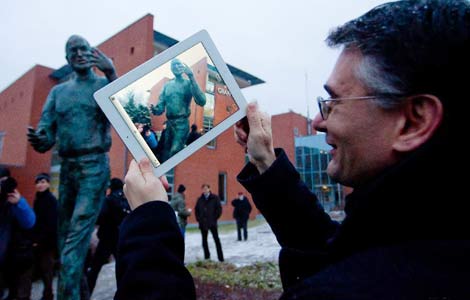Greater transparency needed in China's charity sector
Updated: 2012-01-02 13:37
(Xinhua)
|
|||||||||
BEIJING - Governmental charity organizations, like the Red Cross Society of China (RCSC), have been forced to grapple with a public trust crisis following the well-known Guo Meimei scandal.
In late June of 2011, a 20-year-old woman calling herself Guo Meimei claimed to hold a senior position with Red Cross Commerce, an institution she claimed fell under the RCSC.
She posted photos of her lavish lifestyle on her microblog, showing her leaning on the hood of a white Maserati while holding an Hermes bag, sipping a drink in a business-class cabin on an airplane, and posing on a horse. The photos riled up Internet users who suspected that she had embezzled money from the RCSC.
Although the RCSC, which Chinese people see as a major entity they can offer donations to, denied the existence of Red Cross Commerce, the scandal led to an 86.6-percent drop in donations to national charity organizations over the following six months, according to statistics released in December by the Ministry of Civil Affairs.
The scandal tarnished the image of the RCSC, according to Zhao Baige, the executive vice-president of RCSC.
RCSC's financial report shows that some uses of funds were unclear, Liu Jiayi, the auditor-general of the National Audit Office, said at the 11th Standing Committee of the National People's Congress in June.
"Charities will lose public credibility without transparency," Yang Tuan, a researcher with the Chinese Academy of Social Sciences (CASS) and the co-editor of the China Charitable Donation Blue Book released by CASS, said. "The Guo Meimei scandal can be a chance to change China's charity system."
A long road to transparency
The RCSC has a long way to go in making fund usage more transparent, as do China's other foundations, according to Yang.
Transparency in China's charity sector has drawn public attention since 2008, when huge donations were quickly raised to help with reconstruction following the massive Sichuan earthquake, but the total amount of donations for the Sichuan earthquake still remains unclear, Yang said.
When Yang was editing the China Charitable Donation Blue Book in 2008, the Ministry of Civil Affairs told Yang that it was difficult to ascertain exactly how much money had been donated. The ministry told her the total donations for the Sichuan earthquake could be 50 billion yuan, but then changed it to 70 billion and, later, to 80 billion yuan.
In 2009, the RCSC organized a committee of public supervisors, which recruited 23 experts and social celebrities and 15 full-time supervisors to oversee the organization's fund usage.
"Actually it's just a title. It's not easy to follow every donation and every financial report," said Yang, who is one of the supervisors. "But at least the supervisors committee shows that the RCSC is willing to add more transparency."
The accounts of other governmental charity organizations are also unclear. The Soong Ching Ling Foundation in Henan province reportedly embezzled charitable donations to invest in real-estate companies. The foundation, which claimed to be a non-profit organization, was established with government support in 1982.
Meanwhile, public foundations and private foundations face different kinds of administrative regulations in China. Public foundations, such as the RCSC, are allowed to raise funds from the public, but private foundations usually need to meet strict prerequisites and go through a complicated process to raise money legally.
Nevertheless, private foundations outnumber public foundations, according to a report issued by the China Foundation Center (CFC) in December. The report also revealed that the CFC can only check about 24 percent of any private foundation's project information based on their annual financial reports.
"China has more than 2,000 foundations, but 1,300 have no websites, 800 can not be contacted by telephone, and some even claim that the fund usage is confidential business," said Xu Yongguang, the president of ChinaFoundationCenter.org.
From Jan 1, 2012, domestic foundations' annual financial reports, their financial situations during the management reshuffling period and certain donation programs will be required to be audited by a professional auditing firm, according to a joint statement from the Ministry of Finance and the Ministry of Civil Affairs released on Nov 29.
Prior to this regulation, there were no auditing requirements for charity foundations in China.
The RCSC launched a platform in July to keep track of donation information. The platform continually updates information about donors' names and donation amounts, as well as how the donation money is put to use. But so far, donation information is only available for the 2010 Yushu earthquake in Qinghai province, which garnered about 20.6 billion yuan in donations to the RCSC.
Prior to the RCSC's information platform, there had only been a public announcement that all donated funds would go to public finance authorities in Qinghai province.
"Donors couldn't know how their money was being used, which made them less likely to donate," according to Yang, the researcher from CASS.
Changing tides
For the first time ever, transparency was one of the ranking criteria for Forbes China's best charities list in 2011.
Released in November, the list names the year's top three charities as the Shanghai-based foundation Cherished Dream, the Beijing-based You Change China Social Entrepreneur Foundation, and the China Red Cross Foundation (CRCF).
Meanwhile, eight of the 25 most transparent charities listed were private foundations.
Although the CRCF ranked third on the list and is a different legal entity than the RCSC, the public continued to doubt its reputation following the Guo Meimei issue because they share the Red Cross name, according to Liu Xuanguo, secretary-general of the CRCF.
Charity in the hands of the people
Since the Guo Meimei scandal erupted, micro-charity has quickly taken off in China.
Micro-charities are those which originate on microblogs and are supported by various non-official charity programs. Micro-charities generate money as people forward messages about others in need of help.
In response to the trust crisis facing some charities, micro-charities should be a trend in our society, according to Tao Chuanjin, the director of the Research Center of Philanthropy and Social Enterprise at Beijing Normal University. He sees the micro-charity not just as microblog charity, but as charity from every citizen.
"People generally think charity is the government's business and will blame the government for problems, but people can actually play a more important role in charities than the government can," Tao said. "The micro-charity often sets lower prerequisites and is more approachable for common people."
"On the other hand, the government should open charity to more private organizations and let donors determine their development," Tao added.
One successful micro blog charity is the Free Lunch for Children program, which debuted in April.
Deng Fei, a journalist with Ifeng Weekly as well as the founder of the free lunch program, posted a message on Sina Weibo, China's most popular Twitter-like service, saying he was going to build a school cafeteria for a primary school in Guizhou province.
The program offers rural children a free lunchbox with portions of rice, meat, vegetables and an egg. People can donate 3 yuan each day to provide nutritious school lunches to children unable to afford a healthy lunch.
The post was forwarded by netizens and received loads of public support. After two months, more than 500 journalists and dozens of media outlets in China came out in support of the program.
Deng registered the Free Lunch for Children Foundation (FLCF) as a sub-foundation under the China Social Welfare Education Foundation. So far, FLCF has collected about 1.4 billion yuan.
Meanwhile, the program's scope is no longer limited to offering free lunches. Some people come together to donate a library to children and local villagers, pharmaceutical companies donated first aid kits, and the children's parents can apply for small loans programs.
But transparency is also a problem for the FLCF. Volunteers have found that local villagers take the lunchboxes, so now Deng requires the schools' headmasters to hand in detailed financial reports and he asks parents to check whether their children have lunch every day.
The program also sends volunteers to the schools to see how the donations are being used. "Running the program is also a journey seeking a better way for charity transparency," says Deng.
Related Stories
Red Cross working for transparency 2011-08-03 07:50
Red Cross hit by new claims 2011-10-14 07:36
Red Cross faces credibility crisis 2011-08-10 07:54
China's Red Cross responds to critics 2011-08-02 06:07
Red Cross questioned over luxury vehicles 2011-08-10 08:14
Scandal-hit China Red Cross changes leadership 2011-10-11 21:49
Hot Topics
Kim Jong-il, Mengniu, train crash probe, Vaclav Havel, New Year, coast guard death, Internet security, Mekong River, Strait of Hormuz, economic work conference
Editor's Picks

|
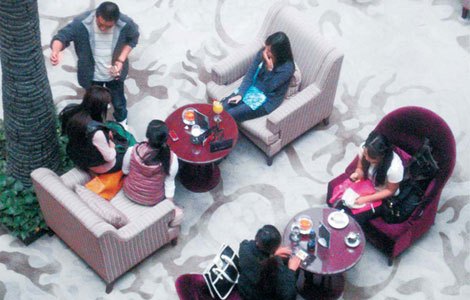
|
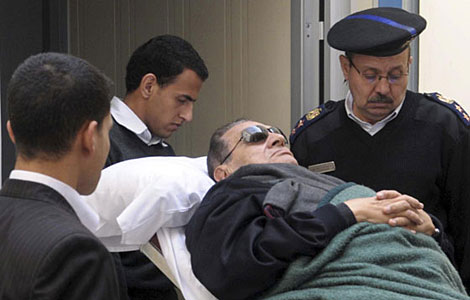
|
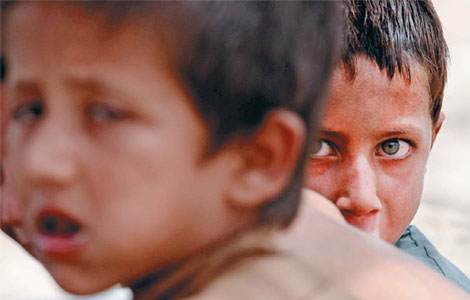
|
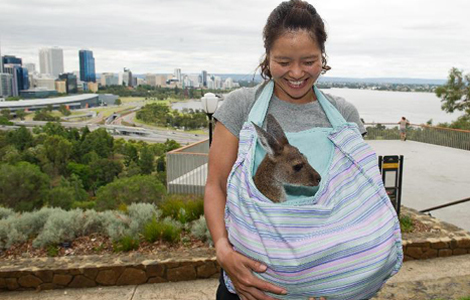
|

|



